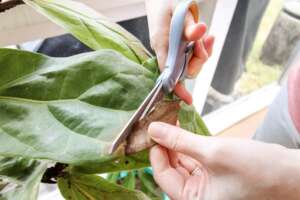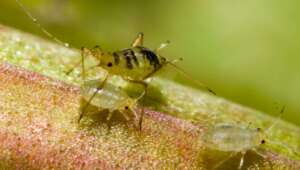Table of Contents
 Bamboo plants are easy-to-grow, low-maintenance houseplants that can be tricky to keep alive. When they’re thriving, they grow quickly and produce beautiful foliage, but when they’re not happy, they are a bit more difficult to revive. Here’s how to revive bamboo plant tips and tricks. If you follow the steps, you are at the right place.
Bamboo plants are easy-to-grow, low-maintenance houseplants that can be tricky to keep alive. When they’re thriving, they grow quickly and produce beautiful foliage, but when they’re not happy, they are a bit more difficult to revive. Here’s how to revive bamboo plant tips and tricks. If you follow the steps, you are at the right place.
This article teaches you the best methods to revive a bamboo plant going through a challenging phase. By following our easy-to-follow steps, you can bring your bamboo back to life in no time. Bamboo plant care is not as mysterious as that.
As long as you know what the plant needs, it is great to decorate your home. When bamboo plant leaves turn yellow, brown, or pale green, they are signs of insufficient light and water.
How to Revive Bamboo Plant – Different Ways
Bamboo plants can be a beautiful addition to any garden, but you may need to revive them if you neglect them for a while. If you’re interested in reviving a bamboo plant that’s been in decline, there are a few steps you can take.
The most important is, identify the cause of the decline and then focus on solving that issue. Once the problem is fix, bamboo will start to grow again.
Our focus is tol show you how to revive a bamboo plant that’s been struggling. We’ll also suggest some tips on choosing the right bamboo and provide some helpful advice on how to care for it. So get ready to revive your bamboo garden.
Tips To Select Bamboo Plant
Bamboo is an excellent plant in your garden because it’s one of the fastest-growing plants. It can be used to decorate the sides of your house, but it can also makes a great addition to your vegetable garden.
Look at the Leaves
The best way to know if you’re buying good bamboo is by looking at the leaves. The leaves should be bright green and smooth—not shiny or rough-looking. If they’re dull-looking, they’re probably not going to live long.
Check for Holes in the Stem
You want to make sure that there are no holes in the stems of your bamboo plants. You can tell if there are holes by looking at the base of each leaf and seeing if any of them have been cut open or damaged somehow. If so, don’t worry—you can plant new shoots instead.
Choose Organic Bamboo

If possible, choose the bamboo that has been grown organically or at least without pesticides. This will mean that it’s less likely to die when the temperature dip below freezing for long periods or in wet weather.
Check for Plant Size
The final factor to consider before buying bamboo plants is how big they’ll get. Some types of bamboos reach heights of up to 15 feet tall, so make sure the size of your yard will accommodate this type of plant before making a purchase decision.
Types of Bamboo Plant
There are many types of bamboo plants, including:
- Mature Bamboo:
This type of bamboo is the best choice for beginners because it grows quickly and does not need water as often as other types of bamboo. Mature bamboos are usually around 6-8 feet tall and have a lifespan of 25 years.
- Nursery Bamboos:
These smaller bamboos are grown from seeds or cuttings, so they don’t have as much strength as mature bamboos. Still, they’re easier to care for since they’re smaller in size and take less time to mature into full-grown plants than mature bamboos do since they’re so young when you first get them home from the nursery! They also grow faster than mature ones because the dense root system gives them more strength and height.
Simple Ways to Revive Bamboo Plant
When you have problems with your bamboo, though, they are easy to fix. Here are a few simple ways:
Cut Away Dead Leaves

Remove all dead and dying branches from the main trunk. If you need to prune back on the main trunk, cut away around 30 percent of the root ball.
Add Organic Fertilizer
Add organic fertilizer every month or two until you see new growth in around 3-5 years. If your bamboo doesn’t seem to be growing back after a couple of years, try adding more fertilizer every month or two until you see new growth coming back in around 3-5 years.
Water Regularly
Water regularly (but not too much) with good quality water that your bamboo likes; avoid using cactus- or citrus-based products as they may harm it. Make sure your soil is well-drained and moist, but not wet because you don’t want to drown your plant.
Mulch Around Base
Mulch around the base of the bamboo plant to help retain moisture and keep weeds down, which will help it thrive even more.
Give Proper Sunlight to Plant
Give the bamboo sunlight by placing it in a sunny window or on a porch or patio for about 8 hours a day. This will help keep its roots healthy.
Check for bugs

If you see insects on your bamboo, use an insecticide spray to get them off; then wait until they’re gone before moving your bamboo back indoors or into a separate container if necessary. This will help protect it from other insects that might be living there.
Consider the size of Pot
Take into consideration the size of the bamboo plant and the size of the Pot you will put it in. When you try to force a too-small bamboo plant into a too big pot, it may rot instead of reviving, while you will prevent it from receiving sufficient hydration and nutrition if you have chosen a too-small pot. The appropriate size pot for your bamboo plant can also help revive it. So we need to know how big your bamboo plant is when alive before deciding what Pot to choose.
FAQs
Why my bamboo plant is looking dead?
There can be many reasons for your plant looking dead; most common are lack of water, lack of sunlight, and over-fertilization.
Can bamboo plants grow back after dying?
It is impossible to bring back any dead plant, but you can always help a struggling plant. If the plant’s stems also turned yellow with leaves, then there is nothing you can do.
Why my bamboo plant is turning brown?
Too much sunlight and heat can turn bamboo leaves brown. All kinds of bamboo plants prefer partial shady places and moist soil.
Conclusion
Thank you for reading. We have discussed the best ways to revive a dying bamboo plant. We explained the different causes of your plant death and the methods you can use to help your plant revive. We hope this will help you get your bamboo plant back to its lively and healthy self! Keep reading to learn more.
I hope that you find the above article helpful. If you have any questions, please feel free to leave a message below. We wish you a nice day.
